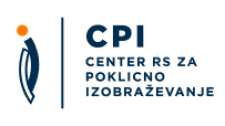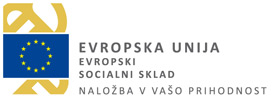Diplomirani oblikovalec unikatov (UN) / diplomirana oblikovalka unikatov (UN)
Selected qualifications
| Name of qualification | Name of qualification: Diplomirani oblikovalec unikatov (UN) / diplomirana oblikovalka unikatov (UN) Add to comparison |
|---|---|
| Translated title (no legal status) | Translated title: Bachelor of Arts in one-off design |
| Type of qualification | Type of qualification: Academic bachelor's degree |
| Category of qualification | Category of qualification: Educational Qualification |
| Type of education | Type of education: Academic bachelor's education |
| Duration |
Duration of education:
3 years
|
| Credits | Credits: 180 credits |
| Admission requirements |
Entry conditions:
Into the programme anyone can enroll:
All candidates must pass the aptitude test, which is conducted and assessed according to the Rules on the Aptitude Test of the Academy of Fine Arts and Design and the rules of the Enrollment Commission of the University of Ljubljana, published in the annual Tender of the Ministry of Higher Education, Science and Technology. |
| ISCED field |
Field:
Arts and humanities
|
| ISCED subfield | subfield: fashion, interior and industrial design |
| Qualification level |
SQF Level:
SQF 7 |
The qualification holder will be able to:
General competences:
- Mastering basic knowledge in the field of unique design,
- ability to integrate knowledge from other fields,
- ability to analyze, synthesize and plan the entire design process of unique and small series production,
- ability for independent creative and research activity in the field of design in material, development of artistic awareness and sensibility,
- awareness of the importance of unique design,
- ability to use knowledge in practice, ability to realize, present and promote one's own artistic and design work,
- ability to develop new creative concepts in the profession,
- ability to understand the interdependence between different disciplines, technology and design,
- developed communication skills in the domestic and international environment,
- developed professional, ethical and ecological responsibility,
- developed ability to work in a group in the domestic and international environment.
Subject-specific competences:
- Knowledge of the role and development of glass and ceramics design throughout history,
- ability to solve concrete design tasks using conceptual methods and procedures,
- ability to combine knowledge from various fields of artistic creativity, theoretical sciences and other artistic and design practices and applications,
- ability to place new technologies and findings in the context of artistic creation and design,
- ability to artistically express ideas and concepts,
- ability to innovate new forms,
- the ability to transfer innovations in technological processes into the language of art,
- understanding the general structure of artistic creation and design,
- understanding and application of methods of critical analysis and development of theories and their use in solving concrete tasks in the field of unique design,
- development of skills and abilities in the application of knowledge in the field of artistic creativity.
Students' knowledge is assessed by means of practical exercises and seminar papers, and also via products, projects, performances, services, etc. and by examinations. Examination performance is scored as follows: 10 (excellent); 9 (very good: above-average knowledge but with some mistakes); 8 (very good: solid results); 7 (good); 6 (adequate: knowledge satisfies minimum criteria); 5–1 (inadequate). In order to pass an examination, a candidate must achieve a grade between adequate (6) and excellent (10).
To enroll in a higher year, students must have a confirmed previous year with frequencies from all subjects and the following number of ECTS credits:
- for enrollment in the second year at least 54 ECTS credits,
- for enrollment in the third year 60 ECTS of the first year and at least 54 ECTS according to ECTS of the second year.
The ALUO Commission for Academic Affairs may exceptionally approve a student's progression to a higher year if he / she has achieved at least 42 ECTS credits in the previous year, if he / she has justifiable reasons for this. These are listed in the Statute of the University of Ljubljana.
Second-cycle master's study programmes (SQF level 8)
To complete the study, students must complete:
- all obligations in all subjects entered by him,
- submit a portfolio with the contents of the work in the field of his study programme,
- and prepare a thesis and defend it.
University of Ljubljana, Academy of Fine Arts and Design
URL
Awarding body URL:Upcoming event
International Conference: 10 years of Slovenian Qualifications Framework
International Conference: 10 years of Slovenian Qualifications Framework Brdo Congress Centre, Predoslje 39, 4000...
© Center RS za poklicno izobraževanje, 2018. All rights reserved
Sitemap General legal notice Cookie Policy Production: ENKI






